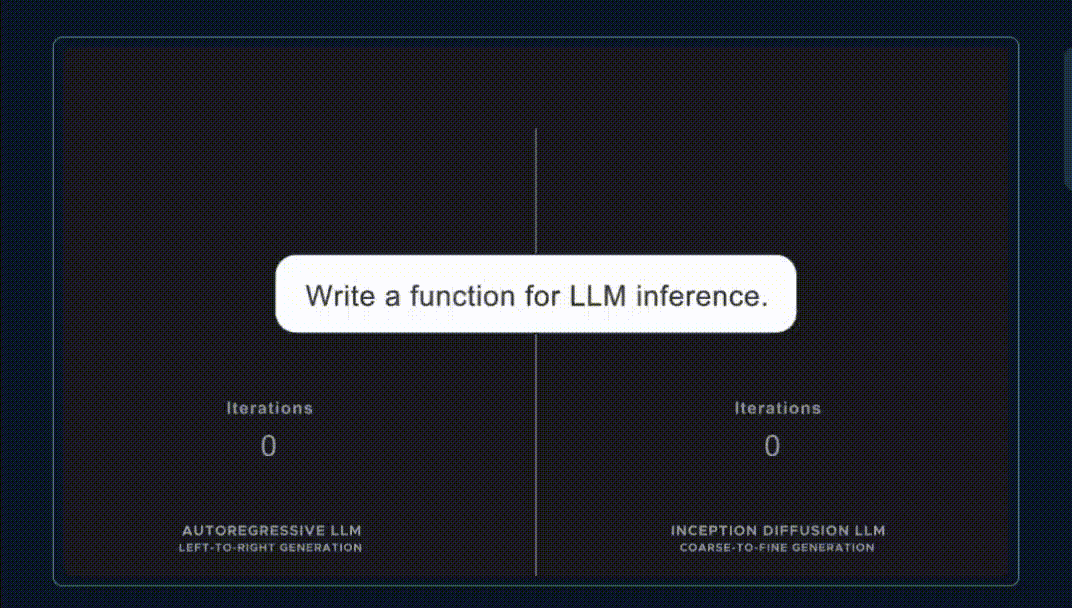The Rise of Diffusion Large Language Models (dLLMs) – A Paradigm Shift in AI?
Diffusion Large Language Models (dLLMs) generate text faster and more efficiently using parallel processing. Innovations like Mercury Coder and LLaDA are already outperforming benchmarks. Could this be the future of AI language models?

The field of artificial intelligence is evolving rapidly, with new breakthroughs challenging the traditional methods of language model training and generation. For years, auto-regressive Large Language Models (LLMs)—such as GPT-4, Claude, and LLaMA—have dominated the AI landscape. These models generate text one token at a time, relying on prior tokens to predict the next, which has proven effective but comes with inherent limitations in speed and efficiency. Now, a new approach is emerging—Diffusion Large Language Models (dLLMs)—which could reshape the way AI generates and processes text. These models leverage diffusion-based techniques, inspired by image-generation models like Stable Diffusion, to produce coherent language outputs in a fundamentally different way.

What Are Diffusion Large Language Models (dLLMs)?
Diffusion models have traditionally been used for generating high-quality images and videos. They work by starting with a noisy dataset and iteratively denoising it to create structured content. This method contrasts sharply with the sequential nature of auto-regressive models, as it allows parallel token generation, making the process significantly more efficient. In language models, diffusion techniques involve a forward process of introducing noise (masking tokens) and a reverse process that predicts the masked tokens iteratively. This approach opens the door for improved efficiency, reasoning capabilities, and controllability in AI-generated text.
Why Does This Matter?
One of the most significant advantages of dLLMs is their ability to generate text much faster than traditional models. By leveraging parallel token generation rather than sequential processing, these models dramatically increase speed and scalability. A prime example of this is Mercury Coder by Inception Labs, the first commercially available dLLM. Reports suggest that Mercury Coder achieves generation speeds exceeding 1,000 tokens per second, making it 5 to 10 times faster than industry-leading auto-regressive models like ChatGPT and Claude. This breakthrough in efficiency means that dLLMs could be particularly valuable in real-time applications, such as conversational AI, large-scale document generation, and AI-assisted programming, where speed is crucial.
Recent Developments in dLLMs
Beyond Mercury Coder, research in diffusion-based language models is accelerating. One of the most promising advancements is LLaDA (Large Language Diffusion Architecture), introduced in the paper Large Language Diffusion Models by Shen Nie et al. LLaDA demonstrates strong scalability and outperforms auto-regressive baselines in key areas such as: In-context learning – Understanding and responding to contextual information with greater accuracy. Instruction-following – Generating more precise and relevant responses based on prompts. Overcoming the "Reversal Curse" – Surpassing models like GPT-4o in tasks requiring structured reasoning, such as reversal poem completion. These findings indicate that dLLMs are not only faster but potentially more capable in complex reasoning tasks, an area where auto-regressive models have traditionally struggled.
What This Means for the Future of AI
The emergence of diffusion-based LLMs represents more than just an incremental improvement—it signals a fundamental shift in AI model design. By breaking free from the limitations of sequential token generation, dLLMs offer several potential advantages: Faster Generation – Real-time applications will benefit from near-instantaneous text generation. Better Scalability – Large-scale AI deployments can leverage diffusion-based efficiency to reduce computation costs. Improved Reasoning & Controllability – Structured generation techniques may enhance AI’s ability to follow complex instructions and generate more reliable outputs. With continued research and innovation, diffusion-based models could become the next dominant paradigm in AI-powered language processing, much like how diffusion models revolutionized image generation.
The rise of dLLMs is an exciting development in AI research. With models like Mercury Coder and LLaDA demonstrating impressive speed and performance, we may soon see a shift away from traditional auto-regressive approaches. If these models continue to improve, they could redefine the way AI interacts with and generates language, making text-based applications smarter, faster, and more efficient. What do you think about diffusion-based language models? Could they replace traditional LLMs in the future?

